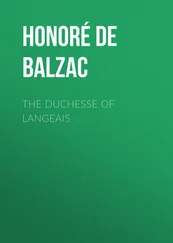Безопасно оплатить книгу можно банковской картой Visa, MasterCard, Maestro, со счета мобильного телефона, с платежного терминала, в салоне МТС или Связной, через PayPal, WebMoney, Яндекс.Деньги, QIWI Кошелек, бонусными картами или другим удобным Вам способом.
Mascara, in Algiers, was captured by the French in 1835.
See Appendix Конец ознакомительного фрагмента. Текст предоставлен ООО «ЛитРес». Прочитайте эту книгу целиком, купив полную легальную версию на ЛитРес. Безопасно оплатить книгу можно банковской картой Visa, MasterCard, Maestro, со счета мобильного телефона, с платежного терминала, в салоне МТС или Связной, через PayPal, WebMoney, Яндекс.Деньги, QIWI Кошелек, бонусными картами или другим удобным Вам способом.
. In 1834 Jackson had claimed an indemnity of twenty-five millions, in very haughty terms, from the Government of Louis Philippe as compensation to the United States for the loss of ships seized under the Empire; in the event of refusal, confiscation was threatened of all French estates within the territories of the Union. While the claim was entirely legitimate, the insulting form in which it was presented delayed a settlement, until President Jackson retracted his words in the communication to which reference is here made.
The Address of the 221 (March 3, 1830). This was a reply to a speech from the throne, and plainly expressed the displeasure of the 221 Deputies at seeing M. de Martignac deposed from the Presidency in favour of the Prince Jules de Polignac.
The speech to which reference is made will be found in the Appendix to this volume.
M. Humann submitted to the Chamber as a necessary measure a scheme for the conversion of Government 5 per cent. bonds, which had already been attempted in vain by M. de Villèle in 1824. The Chamber was inclined to receive the idea favourably, but the Cabinet showed some ill-temper as it had not been previously consulted, and M. Humann resigned. A question was asked in the Chamber on this subject on June 18, and discussion was opened by the Duc de Broglie. "We are asking," he said, "whether the Government intends to propose the measure in the course of this session. I answer, No; is that clear?" This last remark excited general disfavour, and was the subject of adverse comment forthwith.
This is again a reference to the former Ministers of Charles X. Certain people were energetically striving to secure the liberation of these unfortunate political prisoners.
In 1835, in consequence of Fieschi's attempt, the Ministry proposed three severe legal enactments dealing with the jury and the sentences in cases of rebellion, and, most important of all, with the Press. The discussion upon these laws continued in the Chamber from August 13, 1834, to September 29, and ended in a complete success for the Government.
The Marquis de Brignole-Sale.
Marie Christine, Princess of Savoy, died in giving birth to the prince who was afterwards Francis II., the last King of Naples.
The author of these memoirs.
The sentence which condemned Fieschi, Pépin, and Morey to death. They were executed at the Barrière Saint-Jacques on February 19.
The Cabinet was as follows: M. Thiers, President of the Council and Minister of Foreign Affairs; M. Sauzet, Keeper of the Seals; M. de Montalivet, Minister of the Interior; M. d'Argout, Financial Minister; M. Passy, Minister of Commerce and Public Works; M. Pelet de la Lozère, Minister of Education; Marshal Maison, Minister of War; Admiral Duperré, Minister of Naval Affairs.
Extract from a letter.
Prince Charles of Naples, brother of the Duchesse de Berry, was the nephew of Queen Marie Amélie.
Reference is here made to an action for divorce brought against Mrs. Norton by her husband, which made a great stir in England at this time. The intimacy of Mrs. Norton with Lord Melbourne was well known. However, the verdict given in the following June acquitted Lord Melbourne, but Mrs. Norton and her husband separated.
This work was published after the death of the Comte de Rémusat in 1878, by his son Paul.
This plan was not entirely carried out; the Abbé alone was buried at Saint-Patrice.
The Princess Louise was the daughter of Prince Ferdinand of Prussia, the youngest brother of Frederick the Great. She married Prince Antoine Radziwill in 1796.
Queen Wilhelmina of the Low Countries was the daughter of King Frederick William II. of Prussia, and sister of the king then reigning, Frederick William III.
M. Bresson was the French Minister at Berlin.
Princess Albert of Prussia was a princess of the Low Countries.
We have been unable to find them.
An estate belonging to the Duchesse de Dino in Silesia.
Princess Metternich had used some discourteous terms concerning the assumption of the crown by Louis-Philippe in 1830.
The Liberal ideas of the Archduke Charles had induced Prince Metternich to remove this prince from the Court and to regard him with suspicion. They had almost quarrelled.
Extract from a letter.
Daughter of the Marshal of Albuféra.
Yolande de Valençay.
The Baroness of Mengden, niece of the Princesse de Lieven, afterwards lived at Carlsruhe, where she was abbess of a noble chapter. She was very tall, especially in the upper part of her body, and any one seated by her side at dinner was obliged to raise his head in order to see her face. As she was very good-natured, she became to some extent her aunt's drudge; at Valençay, when the Princesse de Lieven stayed there, she gave her niece her jewel-box to keep when she was out driving, so that the Baroness of Mengden could rarely take part in these excursions.
French Ambassador at St. Petersburg.
On the evening of June 25, 1836, a young man aged twenty-six, named Louis Alibaud, shot at the king in the court of the Tuileries when Louis-Philippe was reviewing the National Guard and the drummers were beating a march.
English Ambassador at Constantinople.
Reis Effendi was the Minister of Foreign Affairs in Turkey.
The widow of Napoleon I.
Sieyès died at Paris, June 28, 1836.
General Fagel had been the ambassador of the King of the Low Countries in France under the Restoration.
Читать дальше












